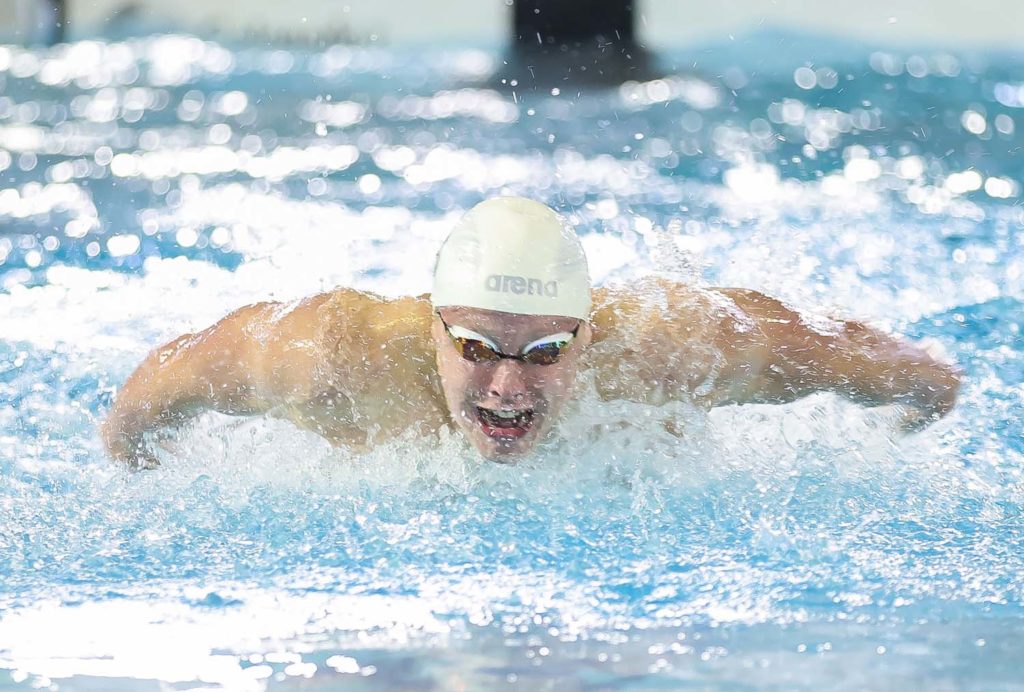Matt Sates Joining Hwang Sun-Woo and David Popovici as the Future in 200 Freestyle

Matt Sates Joining Hwang Sun-Woo and David Popovici as the Future in 200 Freestyle
In July, teenage swimmers took the Olympic final of the men’s 200 freestyle by storm. Hwang Sun-Woo of South Korea, 18, held the world-junior-record holder after a 1:44.62 prelims effort, and also in the field was 16-year-old Romanian David Popovici. Popovici had finished 20th in the 200 free at the European Championships two months earlier in 1:48.38, but by the time he swam at the European Junior Championships in early July, he was down to 1:45.26.
With Olympic gold on the line, Hwang took the race out unfathomably hard, his midway spit a 49.78 that had him a half-second ahead of the field and four tenths under world-record pace. He was on his way to either a stunning and remarkable swim or a drastic and disastrous fade — and what unfolded was the latter possibility. In first place by seven tenths at the 150-meter mark, Hwang finished in 28.70, a second-and-a-half slower than anyone else in the field. All but one of his competitors went by him.
But while Hwang was slowing, Popovici was surging. He flipped sixth at the 150 but then shifted into overdrive. This teenager closed in 26.71, and as the British duo of Tom Dean and Duncan Scott were pulling away from the field, Popovici had a real shot at a medal, only to come up just short. Fernando Scheffer took that spot in 1:44.66, followed by Popovici in 1:44.68.
The gold medalist, Dean, is just 21, and he was competing in the individual 200 free for the first time at a major international competition. By men’s swimming standards, Dean is still very young. Of the 42 individual men’s medals awarded at the Tokyo pool, only two were won by teenagers (Ahmed Hafnaoui’s gold in the 400 free and Tomoru Honda’s bronze in the 200 fly). But two men much younger than Dean were right there in the battle for podium spots in the 200 free. They are undoubtedly among the future stars of the event — and after what we have seen in the past two weeks, we need to add Matt Sates to that conversation as well.
At this point, we don’t know exactly what Sates can do in the long course 200 free. But his short course results have been so brilliant through the first two stops of the FINA World Cup that the potential is evident. At the Berlin meet, Sates swam a 1:40.65 in the short course 200 free, making him the sixth-fastest performer in history and the fourth-fastest in a textile suit. Since the banning of full-body polyurethane suits in 2009, the only men to swim faster are 2012 Olympic champion Yannick Agnel, Scott and 2017 World Championships silver medalist Townley Haas.
In that race, Sates held off Kyle Chalmers, the 2016 Olympic champion in the 100 free and silver medalist this year, and Chalmers is no slouch at the 200. In Tokyo, he split 1:45.35 on Australia’s bronze-medal winning 800 free relay, the second-quickest split of that quartet. He is among the best finishers in the world at any race, and Sates held tough to beat him by 0.17. And then, in their rematch six days later in Budapest, Sates repeated the accomplishment, this time holding off the charging Aussie by just nine hundredths, 1:41.51 to 1:41.60.
What does Sates’ short course 200 free effort convert to in long course? It’s impossible to convert exactly. Short course and long course are very different beasts, and each swimmer handles to the shift from one format to another differently. One common measure of estimation for conversation is to add one second for every lost flip turn, which would put Sates somewhere in the 1:44-high or 1:45-low range. But this is just a ballpark estimate, impossible to know for sure until he actually races at that level in the 50-meter course.
Sates also swept the IM events at both World Cup meets and won the 400 free in a world junior record in Budapest, but the event where he looks most dangerous outside of the 200 free is the 200 IM, in which he finished 14th at the Tokyo Olympics in 1:58.75. After short course times of 1:51.45 and 1:53.43 recently, he has clearly improved since July, but again, we cannot pin down exactly how much with an apples-to-oranges comparison of short course to long course.
And consider this: in the 200 IM Olympic final, the two youngest competitors (Michael Andrew and Lewis Clareburt) were 22. Among the semifinalists, Sates — again, just 18 — was the youngest by a full three years.
Of course, Sates is not the only teenage contender the 200 free, an event which Sates did not swim in Tokyo (he was only entered in the 200 IM and 100 fly) but will undoubtedly become one of his primary races moving forward after his impressive World Cup efforts. He was nowhere on the radar for the 200 free at the Olympics, but remember, neither was Hwang at the beginning of this year. Neither was Popovici as recently as July 1, and he placed fourth at the Olympics.
Let’s look forward to the day when Sates gets to show his skills in the long course 200 free and when he gets to race head-to-head with Hwang and Popovici. Those three swimmers, from South Africa, South Korea and Romania, look like the future in one of swimming’s signature races.





Tom Neill is 19 and split a 1.44 on Australia’s relay.